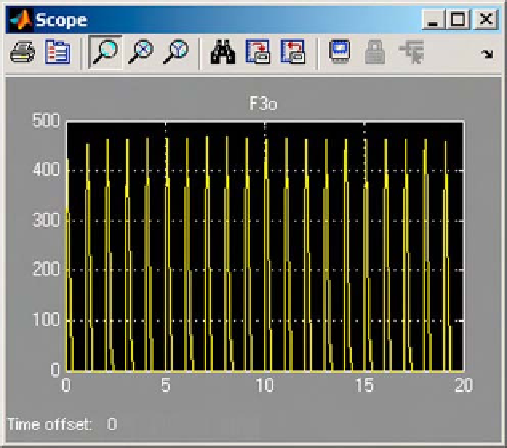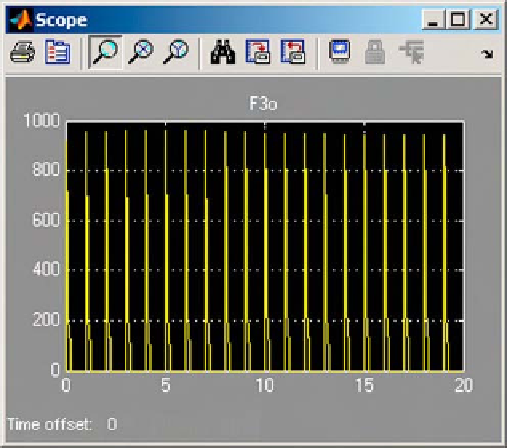Biomedical Engineering Reference
In-Depth Information
congenital heart defect. The significance of VSD varies
with the size of the hole: the greater the hole, the higher
the risk. The size of the hole can range from a pinpoint to
almost the absence of the septum. In the case of a small
hole, it can spontaneously close within the first three years
of life. In the case of a large hole, the left ventricle shunts
blood to the right ventricle via the septum hole. The extra
blood causes the right ventricle to do more work and
makes the lung receive too much blood, and this increases
the pressure. If the problem is not resolved, it can result in
a weakened or enlarged right ventricle caused by stress
and overwork. Also, the lung can become crowded with
the extra blood, causing clotting in the lungs that can lead
to abnormal heartbeat or heart failure.
Example 2.2.10 Ventricular septal defect.
Modify the Simulink implementation of PHYSBE to
model a ventricular septal defect and predict the effect
on blood pressure and volume in the heart.
VSD can be crudely modeled in PHYSBE as blood
flow from the left to right ventricles. The flow between
the ventricles, stimulated by a pressure difference, can
be modeled using Ohm's Law:
Figure 2.2-32 Normal heart: left ventrical outflow simulation
results.
Q
s
¼
P
lv
P
rv
R
and
R ¼
8h
L
p
r
4
Blood has a viscosity, h
,
of 3 cP (
Fournier, 1999
), and
the thickness of the ventricular wall is, in an adult, 4 mm
(
Lue and Takao, 1986
). Here
Q
represents the blood
flow,
R
the resistance, and
r
the radius of the hole.
A ventricular septal defect is modeled in PHYSBE in
the left heart. First, the right ventricular pressure is
connected to the left heart to allow modeling through
a global "goto" tag (
Fig. 2.2-34
).
This is subtracted from the left ventricular pressure to
measure the pressure change (
Fig. 2.2-35
).
Figure 2.2-33 Aortic stenosis: heart blood outflow simulation
results.
end systolic volume, or the amount of blood that remains
in the heart after the heart has finished contracting, also
increases.
2.2.7.3 Ventricular septal defect
Ventricular septal defect (VSD) is a heart malformation
often arising at birth or in conjunction with other pa-
thology, such as myocardial infarction. VSD is character-
ized by a hole in the septum between the two lower
ventricles (
Lue and Takao, 1986
) and is the most common
Figure 2.2-34 PHYSBE model of the right heart with VSD.









